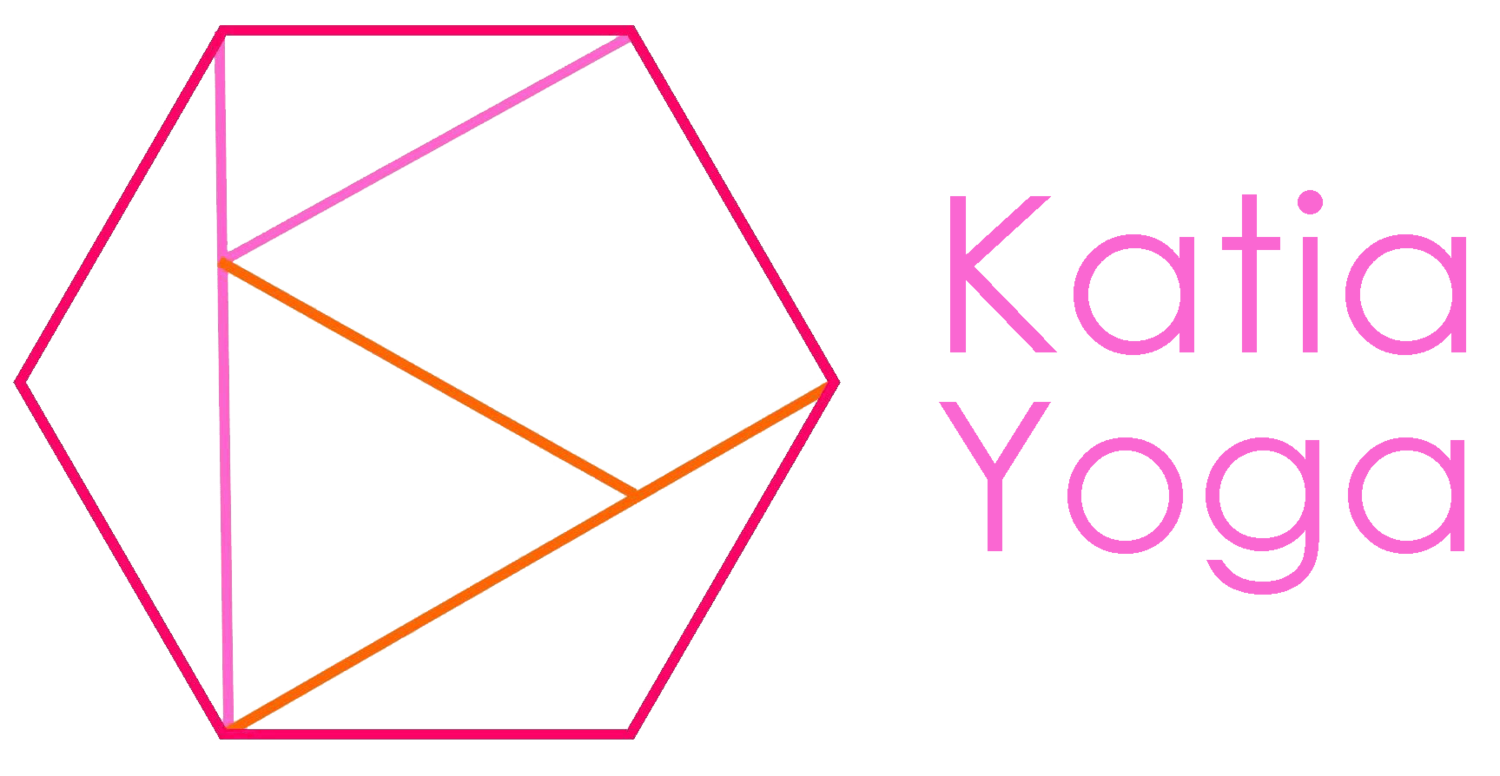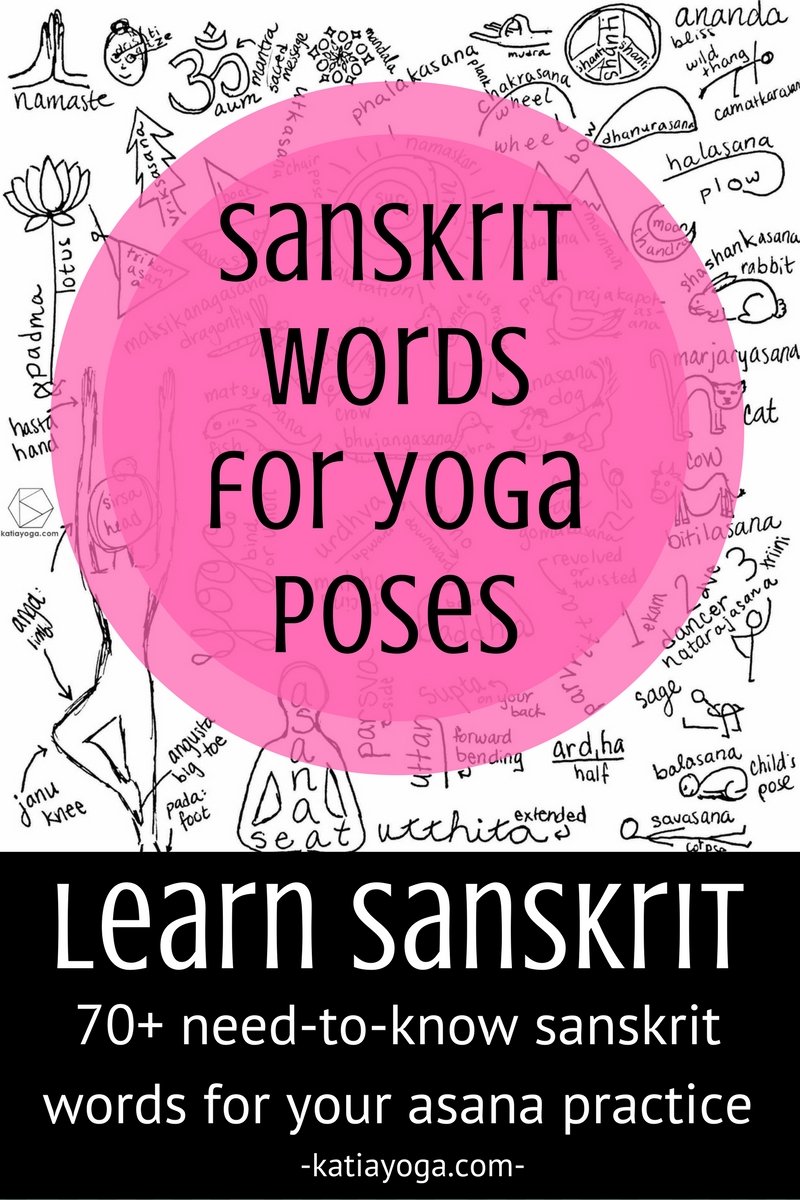70+ Sanskrit words you need to know for your yoga practice
As I've gotten more into teaching yoga, knowing the sanskrit names has really helped my understanding of the poses and what the focus of the shape is. Otherwise, it can seem like a bunch of giberish that you may or may not start to recognize in class.
yoga means yoke which is often interpreted as bind, union or connection. This refers to the physical connection of body parts as well as the connection of body and mind and can even go as far as unbroken concentration in meditation.
asana means seat-- the original 16 yoga poses were different positions for meditation. The goal of yoga was to go deeper into the meaning of life and the interconnectedness of all beings through meditation. Gradually more poses were added as moving through certain exercises helped add to the peace of mind and clarity needed for meditation
I've divided these words into sections: directional sanskrit words, sanskrit numbers, sanskrit body parts, sanskrit animal names, more sanskrit words that have become poses AND deeper principle-related sanskrit words
[Just so you know, this pose contains affiliate links, meaning if you click through and purchase something, I will get a small commission]
Directional Sanskrit Words


parvritta means revolved , twisted or side like parvritta anjaneyasana is a twisted lunge
ardha means half like half moon-- ardha chandrasana
adho means downward like the classic adho mukha svanasana- downward facing dog
urdhva means upward as in urdhva mukha svanasana- upward facing dog
mukha means facing as in upward or downward facing dog
baddha means bound like in baddha konasana- bound angle pose. You'll also hear instructors offer-- "you can take a bind here" where you connect parts of your body around another part-- often your arms around a leg or around your back
supta means on your back-- you'll hear the word supine poses which means poses on your back-- as in supta baddha konasana reclining bound angle pose
uttan means bending forward as in uttanasana or forward fold
utthita means extended like utthita parsvakonasana or extended side angle
parsva means side like parsva bakasana or side crane*
Numbers in Sanskrit
1 ekam
2 dve
3 triini
Any one of these could go with virabhadrasana or warrior pose
Body parts in Sanskrit
sirsa means head
anga means limb in terms of your body parts and the 8 limbs of yoga
hasta means hand
janu means knee
pada means foot
angusta means big toe
More body-related poses
sava means corpse or body
balasana means baby/child pose
maricyasana means sage pose
natarajasana means dancer pose
Animals Poses in Sanskrit


bitilasana means cow pose gomukhasana means cow face pose
marjaryasana means cat pose
svanasana means dog pose
bhujangasana means cobra pose
shalabhasana means locust pose
matsyasana means fish pose
ustrasana means camel pose
bakasana means crane or crow pose(Eka Pada)
Rajakapotasana means (one foot) pigeon pose
shashankasana means rabbit pose
maksikanagasana means dragonfly pose
Sanskrit nouns that inspired asanas


surya means sun
namaskar means salutation
chandra means moon
padma means lotus
navasana means boat pose
trikonasana means triangle pose
tadasana means mountain pose
halasana means plow pose
dhanurasana means bow pose
chakrasana means wheel pose
vriksasana means tree pose
utkatasana means awkward chair pose
agnistambhasana means fire log pose
phalakasana means plank pose
camatkarasana means wild thing pose*
Deeper Principle-related Sanskrit


ananda means bliss or happiness-- as in happy baby: ananda balasana
moksha means freedom from the cycle of rebirth-- on to a state of bliss
shanti means peace and is often chanted at the end of a yoga class
atman means soul/self-- your individual essence
prana means life force of life energy and pranayama is breath work-- moving the life force through your body
ayurveda is the science of life it's basically like Hindu health care
shala is the yoga studio or yoga space it translates as home or abode
drishti means the gaze, view, or sight-- it's where you look during your pose and there are 9 different drishti points
chakra actually means wheel or circle and refers to 7 energy centers, starting with the root chakra
dharma means righteousness and also refers to doing the main thing you feel drawn to do-- a rooster's dharma is to crow
karma is the force created by the actions you take, black or white (similar to good and bad, but not quite the same)
guru translates as dark light and means teacher-- the one who guides you from the dark to the light
mudra means seal and is usually in reference to ways to hold your fingers to make meaningful shapes-- like yoga for the hands
mantra is a sacred message and can come in the form of a syllable or phrase. It can be chanted, sung pr repeated internally for meditation. My #1 fav is Lokah Samastah Sukhino Bhavantu
tantra translates as loom or weave but relates to ritual practices, sometimes sexual
yantra also means loom and is a symbol of a deity in a shape (often square) used to concentrate on for meditation
mandala translates as circle and is a geometric shape representing the universe- usually symmetrical around a center
om is the sound of the universe. It encompasses the beginning, middle and end in its 3 sounds: a-u-m
namaste means the light in me salutes the light in you-- it's a beautiful greeting or closing
Namaste.
Sanskrit words: yoga for beginners. Learn some of those yoga pose names for the asanas


